Review and images by bmathison1972, edited by Suspsy
Today we are going to look at the history of the enigmatic Cambrian animal Hallucigenia sparsa, by comparing an older, outdated model with one depicting the most recent concept of this species.
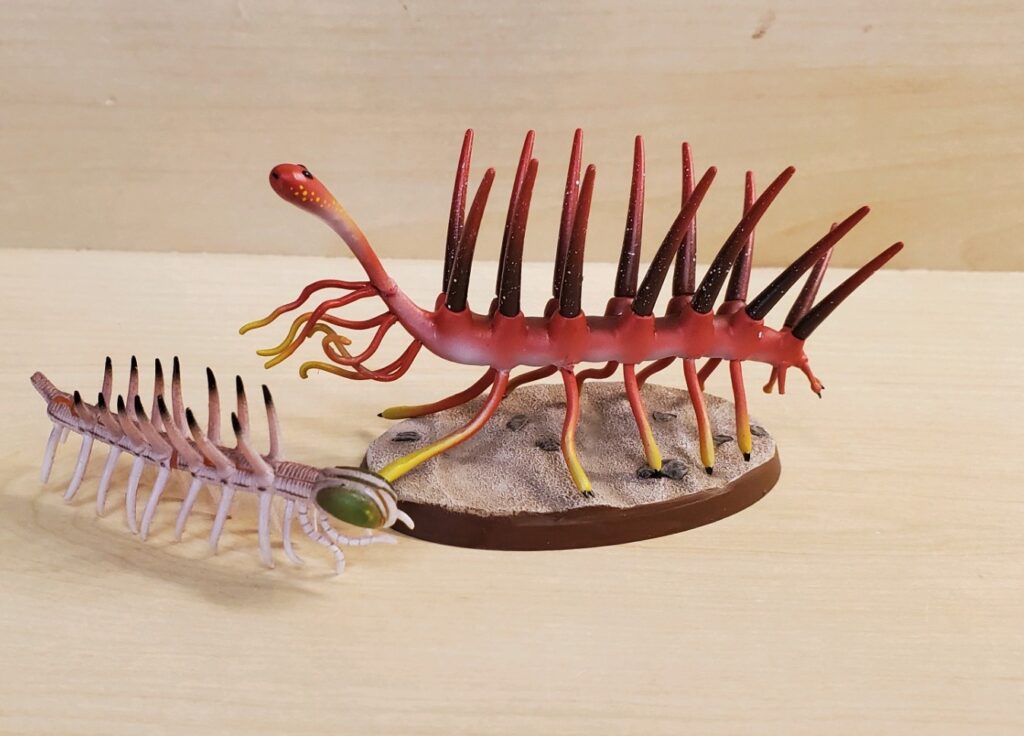
Hallucigenia sparsa was first described by Charles Doolittle Walcott as a polychaete worm in the genus Canadia. It was not until 1977 that it would be transferred to the new genus Hallucigenia by Simon Conway Morris, who felt it was quite unrelated to anything else described to date. Because available fossils could not show the entirety of the animal, the first depictions have it walking on spines with a single row of tentacles down its back. It was believed the first pair of tentacles would deliver food to its large, globular head. The posterior end of the animal featured a slender tail.
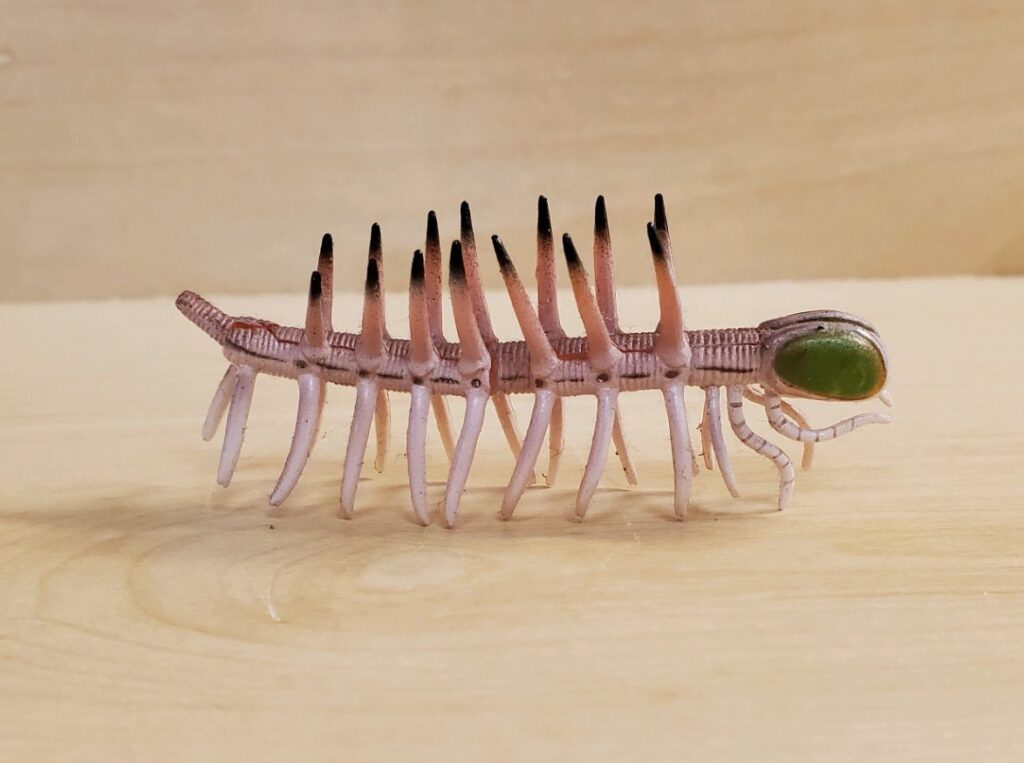

In 1991, Lars Ramskold and Hou Xianguang reclassified Hallucigenia as an onychophoran. They also inverted the animal, making the dorsal tentacles (which they now believed to be paired) the legs and the former spine-like legs are now dorsal armature. The Kaiyodo figure, which was released in 2002, depicts a variant of this 1991 concept. Ramskold and Hou were also the first to suggest the globular ‘head’ was an artifact, possibly stain debris. The Kaiyodo figure maintains the general body plan as proposed by Ramskold and Hou, but still depicts the globular head.

Kaiyodo even went a step further to give the head on theirs an almost alien appearance.

Fast forward to 2015 and the use of electron microscopy to study Hallucigenia. It was revealed that the original ‘tail’ of the animal was the head, and the previous ‘head’ (globular or not) was the tail! The Electron microscopy also revealed small eyes and a mouth with teeth-like structures that may have been used for filter feeding or scraping organic material off of rocks or the sea floor. The phylogenetic placement of H. sparsa is still in question, and it might eventually warrant creation of a new higher-level taxon to accommodate it.
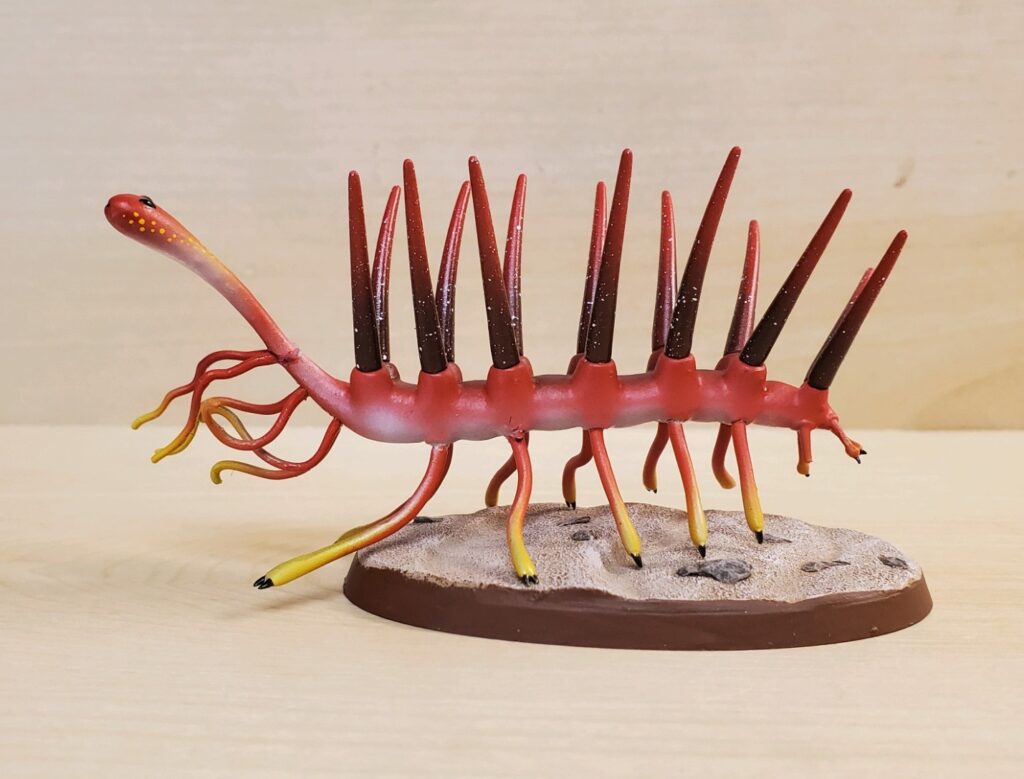
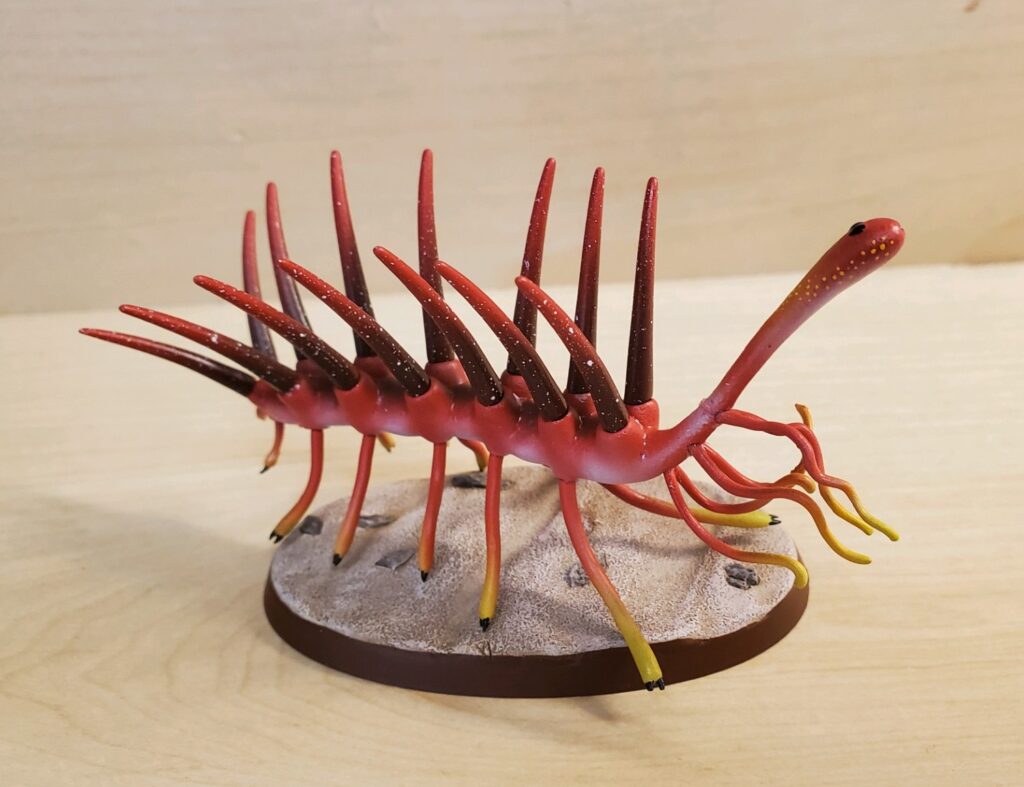
The model by Trilobiti Design, which was produced in 2018, depicts this current concept of the species (as does the 2016 Favorite figure, which I would have used here but I have already recently reviewed it as part of the entire collection it was part of. The Trilobiti model is not a toy or typical PVC figure, but rather a resin model. It is for serious collectors and not to be ‘played with’. It can be delicate (a few parts broke in transit to me, but I was able to easily fix them).
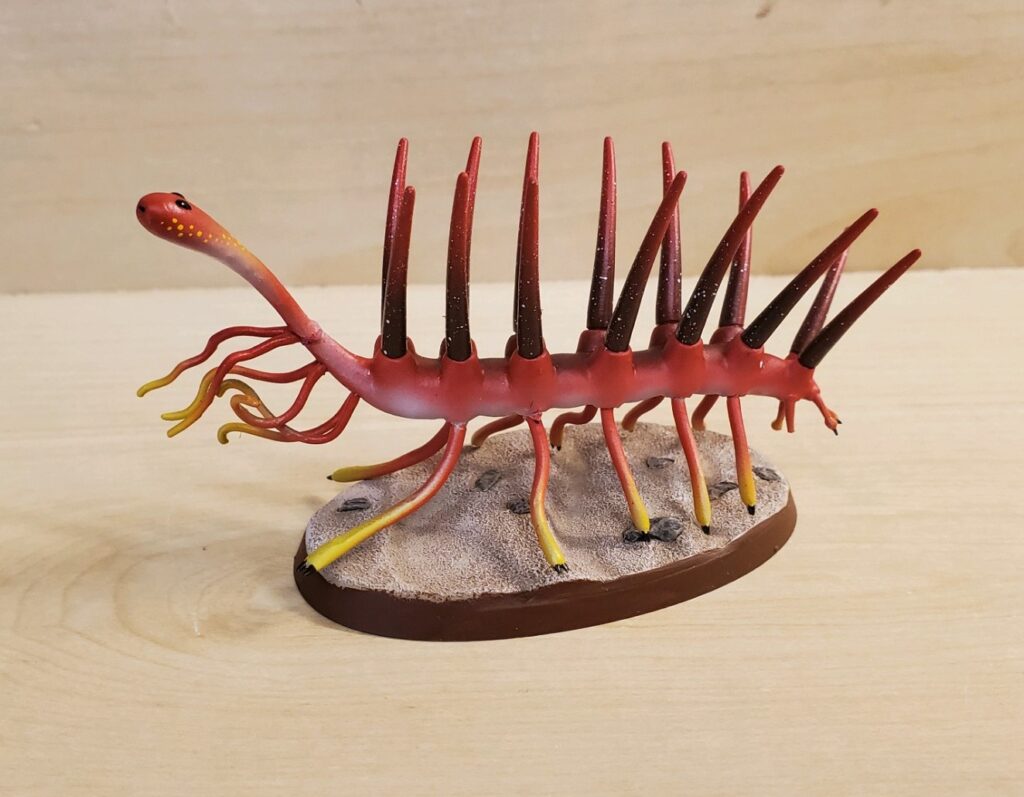
I should point out that the base shown here does not come standard with the figure (at least it didn’t when I bought it). It was given to me as a courtesy by the folks at Trilobiti Design for production delays at the time I ordered it (I can’t remember – they may have been on holiday when I ordered it).
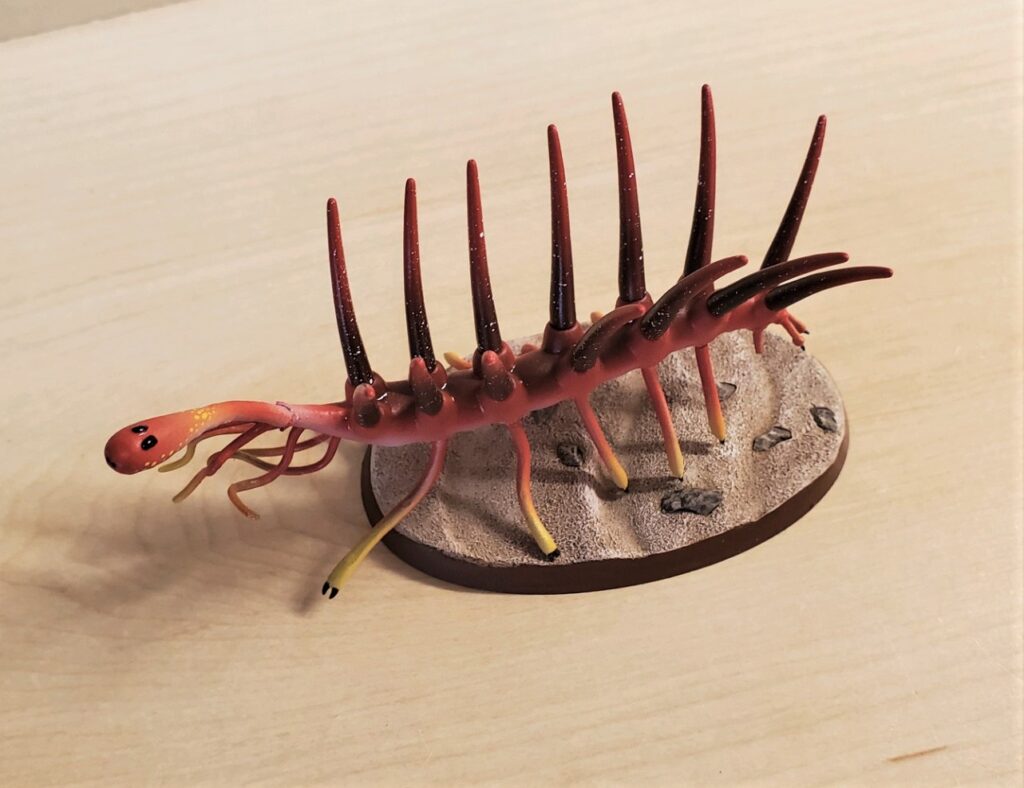
If you want a figure of this species depicting the most recent concept of H. sparsa, the cheapest and most available option is the aforementioned Favorite figure. However, this Trilobiti Design model is fantastic if you don’t mind the cost or having resin figures. Still, it is good to keep some of the outdated models to showcase how far we have come in understanding the morphology of this bizarre creature.
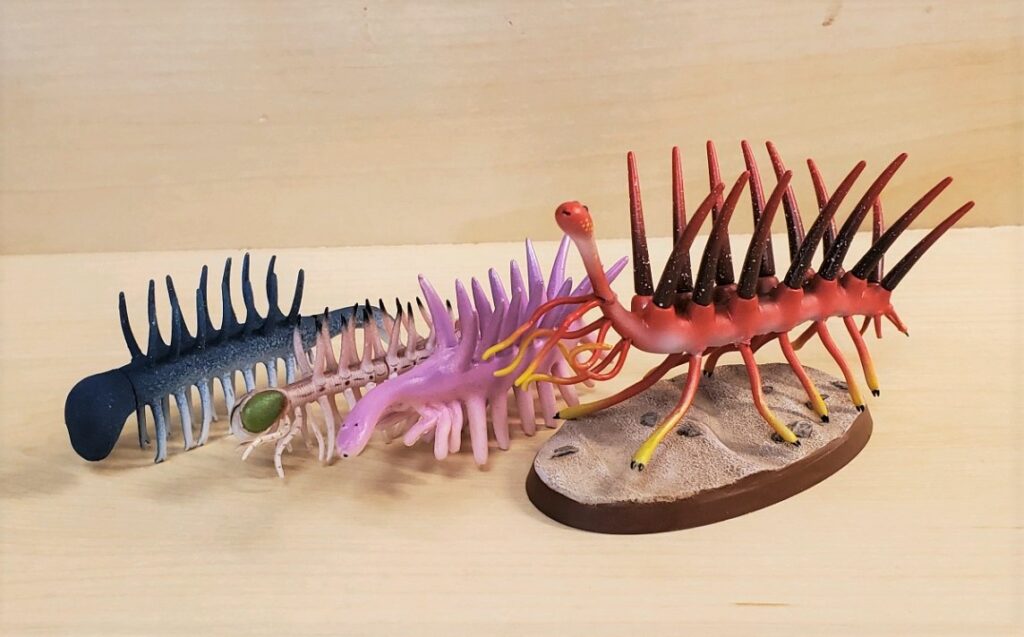
Disclaimer: links to Ebay and Amazon on the DinoToyBlog are affiliate links, so we make a small commission if you use them. Thanks for supporting us!




Cool figure of this odd and unique animal.
Where I don’t follow is that the Kaiyodo one also has the thinner, “tentacle like” appendages at the front. If the head turned out to the the tail, shouldn’t those have been placed at the back near the tail on the new reconstructions?
Or was the Kaiyodo ahead of its time and placed the head on the other end, but without changing its shape?
That baffled me too. I don’t think the small appendages on the Kaiyodo figure are analogous to the three small pairs in the final version; I think that was just artistic license on behalf of (notice, the Kaiyodo figure has two, not three, and they are similar in size and shape to the legs, just banded, rather than being smaller and thinner).
Now this is a genus I really want CollectA or Safari to tackle.